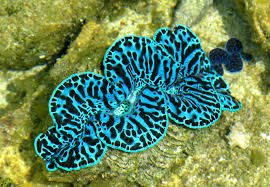 Loading... Please wait...
Loading... Please wait...- Home
- Coral & Invertebrate, Live Rock
- CLAM
- Maxima Clam Colored 15 CM CL001
Maxima Clam Colored 15 CM CL001
Product Description
We're pleased to offer two grades of magnificent aquacultured Maxima Clams from ORA® - Purple, and First Grade Colored. Tridacna maxima have the widest distribution of any Tridacnid species. It is found from the Red Sea, throughout the Indo-Pacific region, to Australia and Polynesia. It usually occurs in shallow, clear water, high current areas where they are known to form high-density populations. They will attach to the substrate with threads from the byssal organ.
Maxima Clams can be identified by having a more elongated shell that lacks symmetry, with narrowly spaced scutes or scallops on the upper portions of each side of their hinged shells. Like some other members of its genus,Tridacna attach to hard substrate or rockwork with thread like appendages called byssal filaments, and can eventually burrow or bore into porous substrate over time.
The smaller ORA Maxima clams are much more sensitive to very intense lighting as their membrane is much thinner than larger specimens. For this reason, care should be taken to properly photo-adapt them to the existing reef aquarium lighting in a similar manner to newly introduced stony and soft corals. When adapting a new Maxima Clam to very intense lighting, it is ideal to set them on a small rock or in a plastic dish with coarse substrate at the bottom of the aquarium. Over time, the clam can then be slowly moved up higher in the aquarium.
The Maxima Clam relies heavily on the photosynthesis of the zooxanthellae cells growing in its mantle. However, all clams also require micro foods designed for filter feeders, especially when small. Offer phytoplankton and other micro foods.
Looking for the best food to feed your Tridacna Clams? We recommend:
AlgaGen Acartia tonsa,
AlgaGen Pseudodiaptomus pelagicus,
AlgaGen Parvocalanus crassirostris,
AlgaGen Tangerine Pod,
AlgaGen Moina salina,
AlgaGen PhycoPure™ Reef Blend,
AlgaGen Decap'd Brine™, and
AlgaGen Rotifers.
| QUICK STATS | ||||||||||||
|



